If someone handed you two high end cameras — a rangefinder and an SLR — which would you pick up first? Which would you end up sticking with as your ‘when in doubt’/desert island camera? What factors would influence those choices?
As chronicled in 35mmc, this actually happened to me during the summer of 2024 when I came into custody of a Leica M3 and a Leica R6.2. Suddenly having access to those world class vintage cameras, along with a Hasselblad 500CM, has awakened a passion for old school film still photography which I’ve been chronicling here on 35mmc, charting my growth and progress and some missteps along the way.
I didn’t suffer over which camera use as my ‘go to’ 35mm option. I naturally gravitated to the M, as I had some previous experience with rangefinders. While it was a momentous choice, it wasn’t a particularly well-informed one at the time. I had a vague sense that rangefinders were more of a connoisseur’s camera than the much more common and popular SLRs. At first I was a little disappointed at the discreet styling of the M3, as I was conditioned by seeing impressive people running around with ‘red dot’ Leica’s. But, even if it looked a little old and plain to me, I figured it was probably still a pretty good camera since it was a Leica.
And I haven’t looked back. I love shooting with an M, and I’ve grown to appreciate the classic styling and superior build quality of the early M cameras, not to mention the gorgeous results. But eventually I decided to give the less famous sibling a run out, both to see how I liked using an SLR and out of curiosity about the comparative qualities of the R system compared to the M.
What follows is by no means an expert opinion or a scientific & technical set of tests/comparisons, but an enthusiast’s look at two different camera systems comparing both the results and how the different systems feel and ‘shoot’ differently.
From the beginning I was very impressed with the Leica R lenses — very sharp, nice contrast and to the degree I’m qualified to comment on bokeh, it seems good.
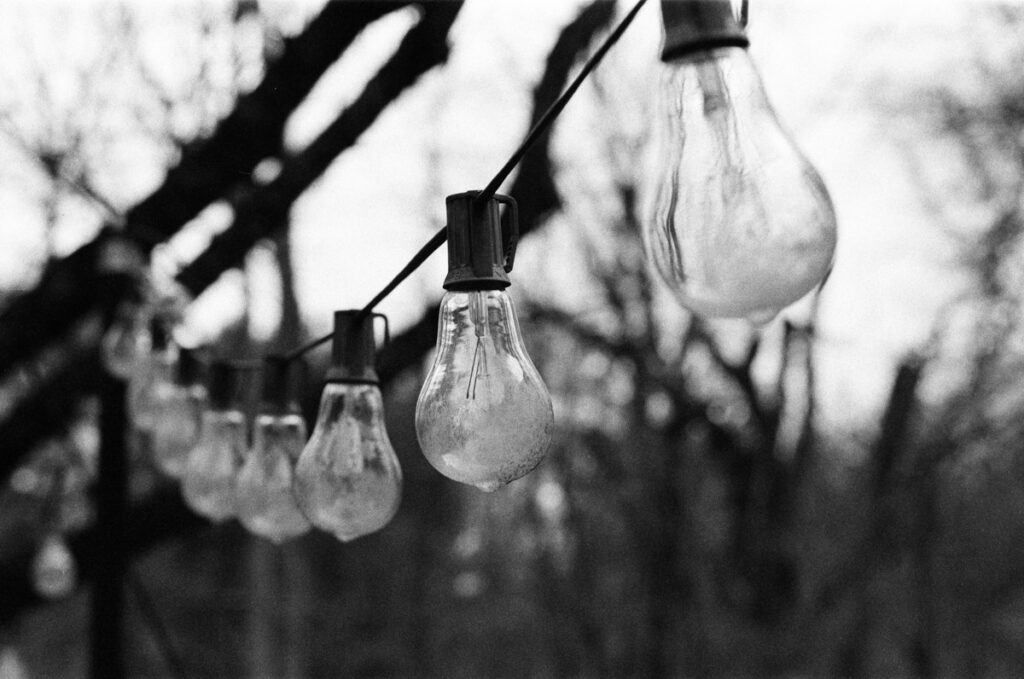
While I liked the look of what I shot when trying out the R6.2, and was very impressed with the glass, I certainly wasn’t ready to switch horses from the M to the R system — more thoughts on that later. But the R6.2 felt too good to be a paperweight and too ugly to be a display camera (wink emoji), so I decided to use it as an ‘around the house’/alternate emulsion camera, usually loaded with color film.
The R6.2 could sit for weeks unused, but was handy to have on hand if the M3 was loaded with b&w and I saw something just crying out to be shot in color.
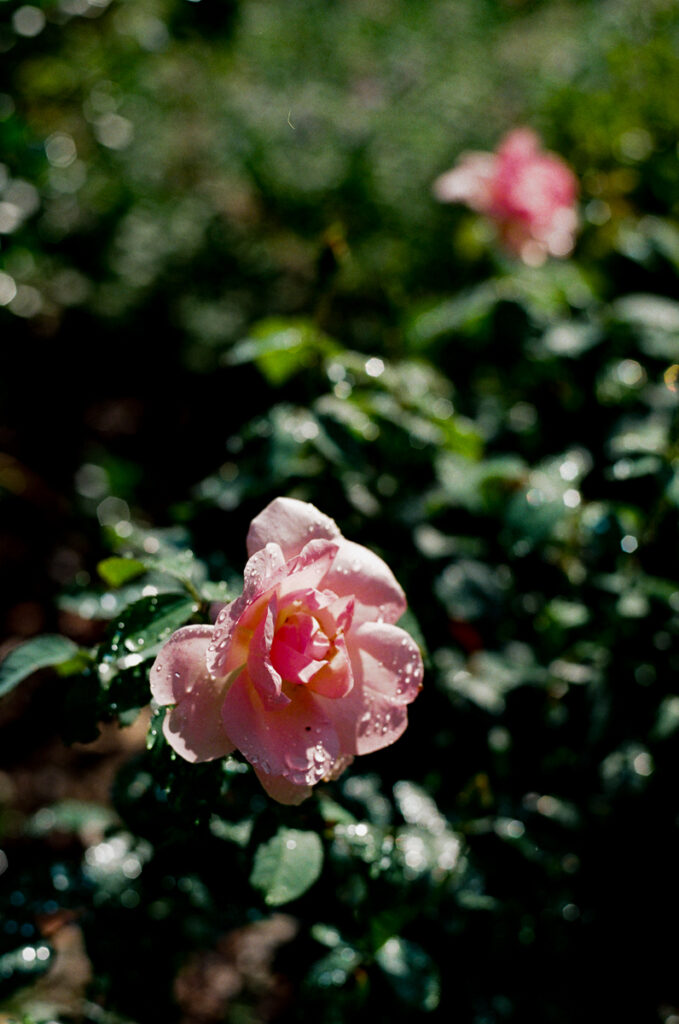
I was very impressed with some of the results of these ‘opportunistic’ shots with the R glass. There was an almost Technicolor vibrance to the colors and a kind of ‘glow’ to the images that felt quite special.
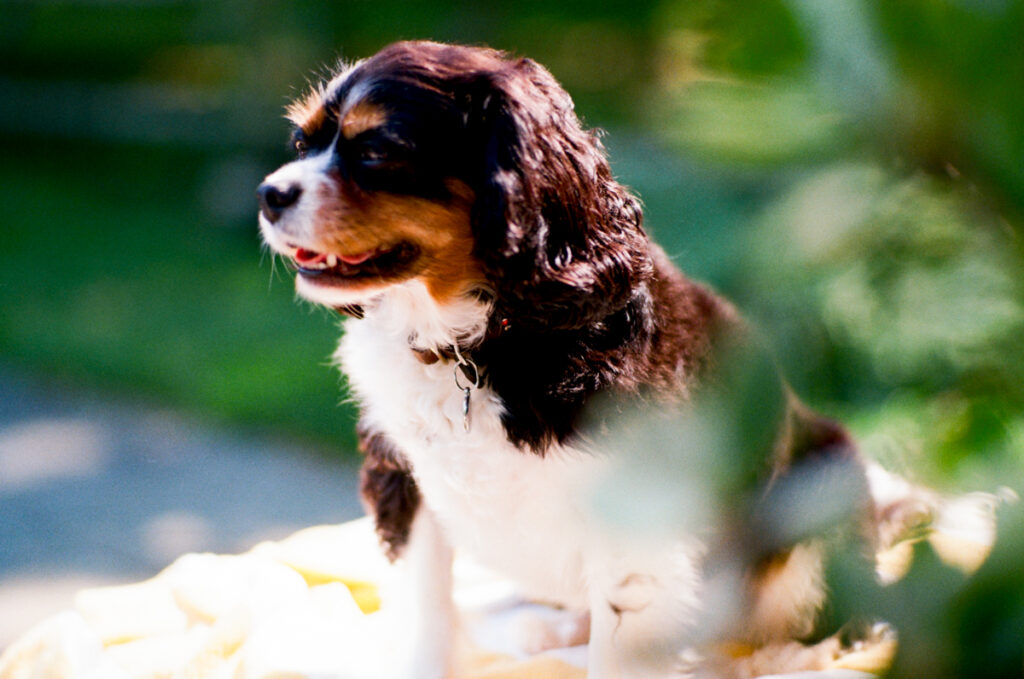
I was impressed enough with the quality of some of those shots that I began to wonder if there was something different and special about the R lenses, even compared to the fabled M glass. Since I love nothing more than a project, I decided to do an unscientific Leica R vs. Leica M comparison to see how the two cameras perform shooting the same subject at the same time in the same light. So one day I loaded both cameras with some Ektar and took them out in my Brooklyn neighborhood for some side-by-side shooting, starting with 50mm Summicron f2’s on both cameras.
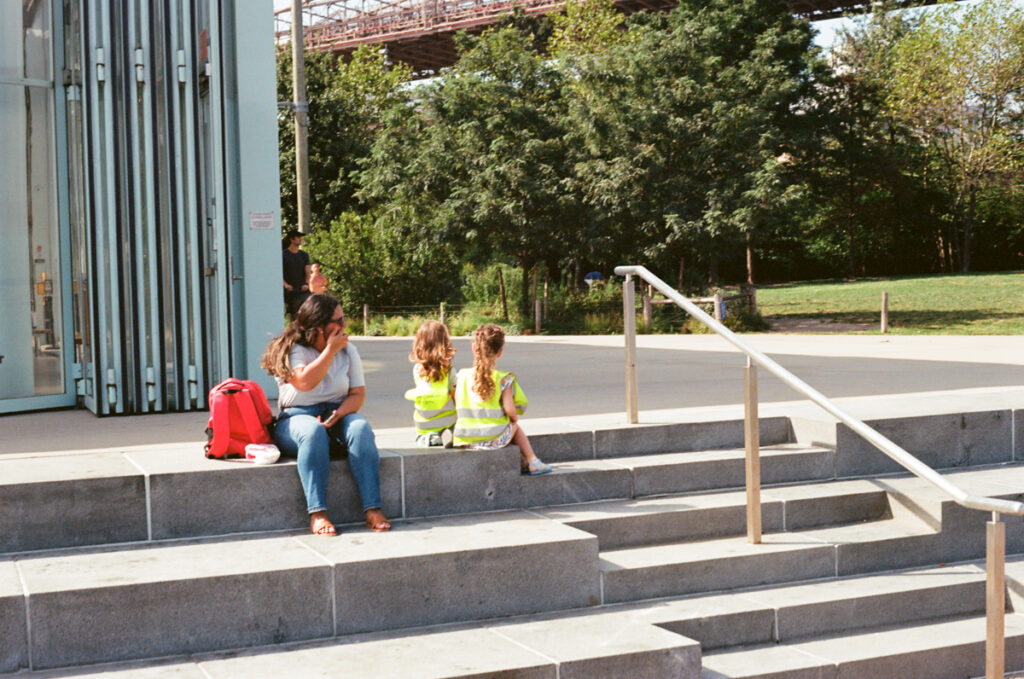
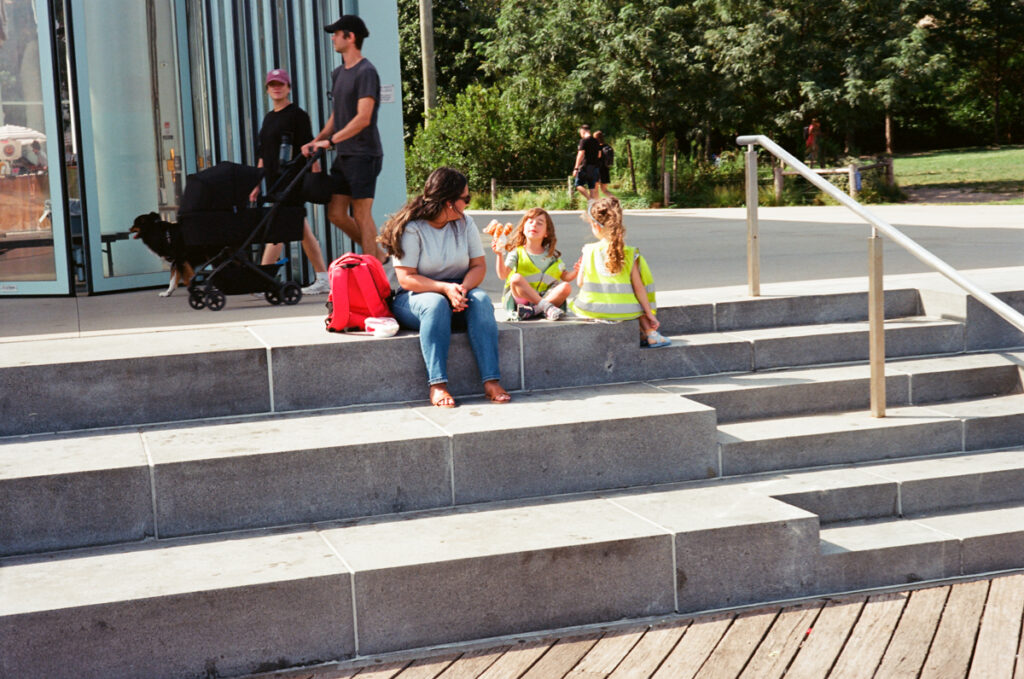
Pretty close, which isn’t surprising since they are both using the same optical formula and the 50mm R was made in 1966, early in the Summicron R manufacturing run, only one year after my 50mm M Summicron, a 1965 Dual Range.
And while they are perfectly nice photos, I’m not seeing any kind of magic ‘glow’ from either camera. So, sadly, I don’t think I’ve discovered a magic lens that imbues 35mm still frames with a gorgeous Technicolor aura; it just happens that if you keep a loaded camera lying around and grab it to shoot something in gorgeous light, you’re more likely to get a gorgeous shot!
That might be the real lesson here in terms of making my photos better…
I also tried out my other 50 mm M lenses, including the contemporary Summilux 50mm 1.4 ASPH…
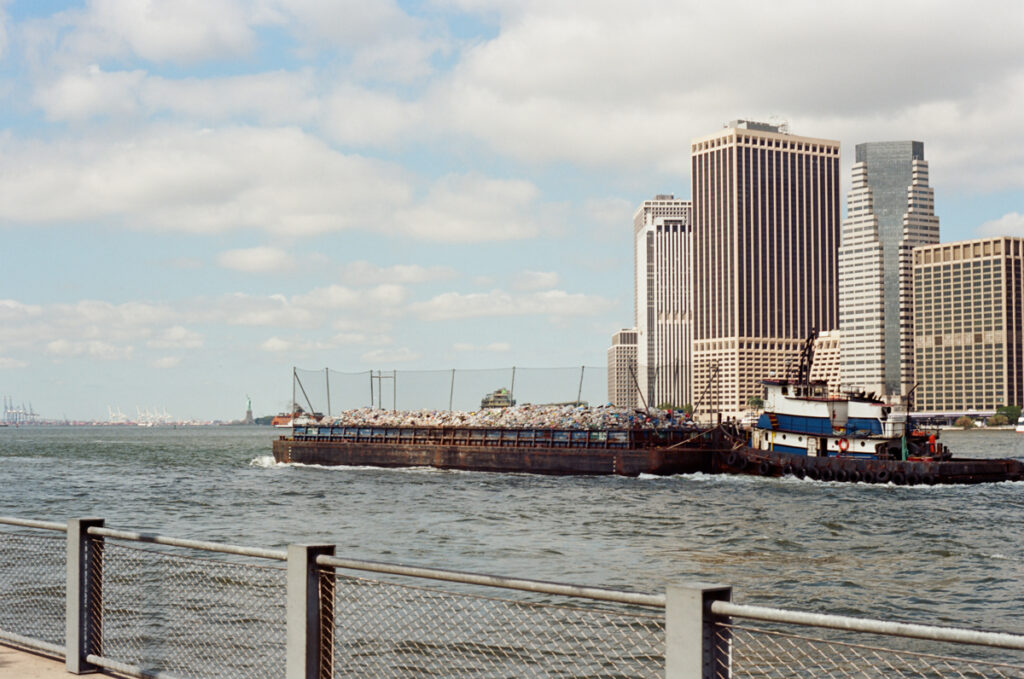
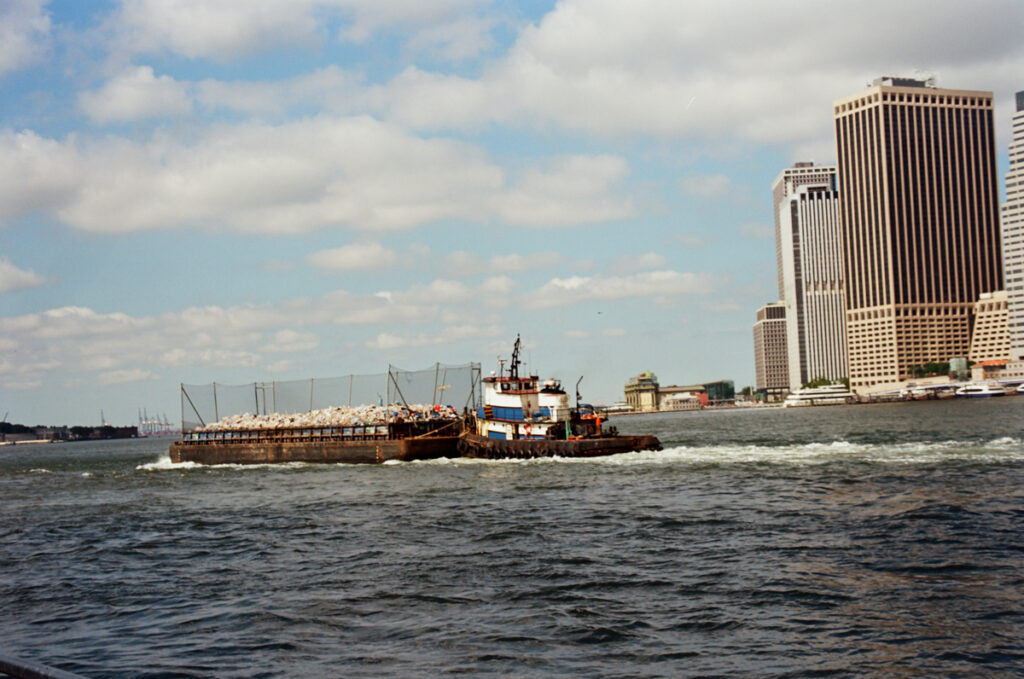
I’d give an edge to the Summilux for deeper more vivid colors. That’s not surprising for a high end 21st Century lens that is rumored to be a ‘secret’ APO lens vs a sixty year old lens that was early in Leica’s experiment with SLR’s. But that advantage comes at a pretty high premium price point…
While we’re talking about price points, the attractions of the Leica R system have to start with the cost. Getting set up with an R body and a couple of lenses costs a fraction of even the least expensive vintage M bodies with comparable lenses. Whether new or used, a 21st Century M film camera with the latest high-end Leica lenses costs many multiples of what an R camera & lens setup would cost on the second hand market.
I also mounted the vintage 1949 Summitar on the M3, which has been my ‘go to’ lens for street shooting in part for its compact size, but also for its personality.
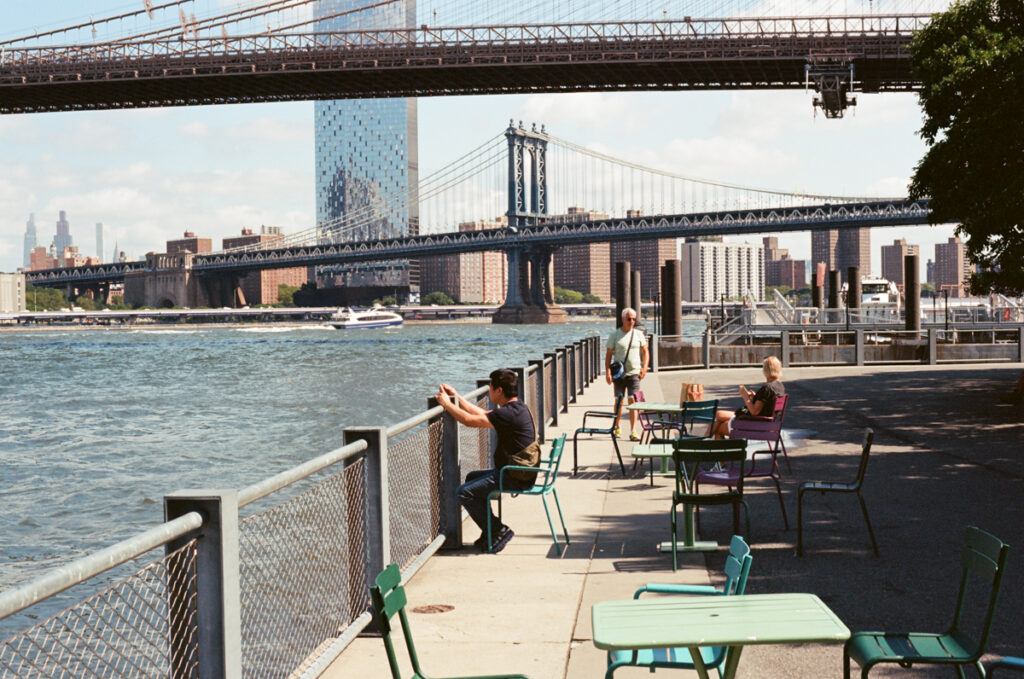
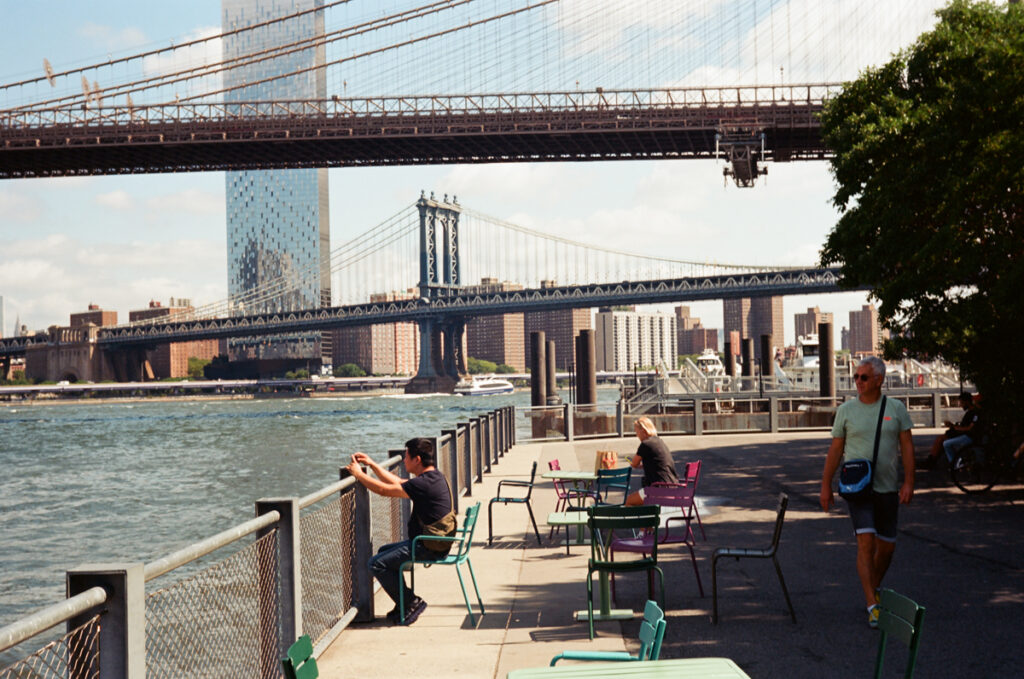
Again, pretty hard to call, but looking at the two images on a single screen I might give a tiny edge to the tiny Summitar for richer colors. Big up for the compact brass collapsible that came off the line while Harry Truman was president!
But it is certainly fine margins that separate all of these lenses — at least on a bright sunny day. While the motivation for this comparison came from shooting in full sun with the R6.2, shooting fairly stopped down can only reveal so much about the comparative qualities of a given lens, particularly whether it will have ‘grace under pressure’ shooting in challenging conditions at the edges of its capacity — which is also at the edge of my capacity at this stage of my development as a photographer! They say all cats are grey at night, and I guess all lenses look great at f8.
After trying out all of my 50mm’s, I tried out some different focal lengths, including the R mount Elmarit 24mm f2.8 vs. the M mount Super Angulon 21mm f4…
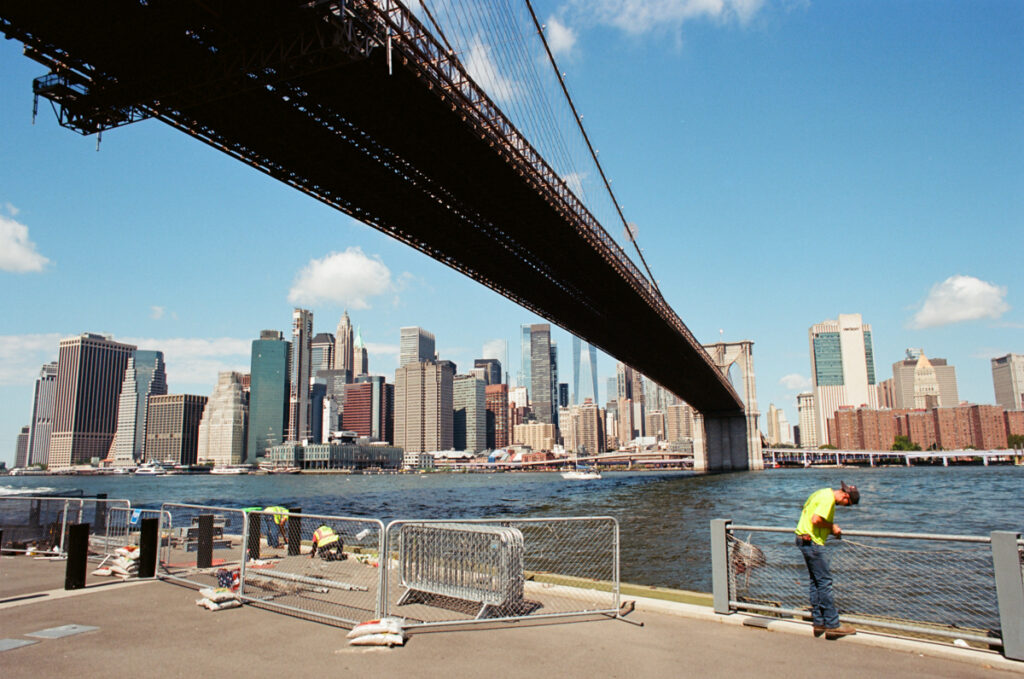
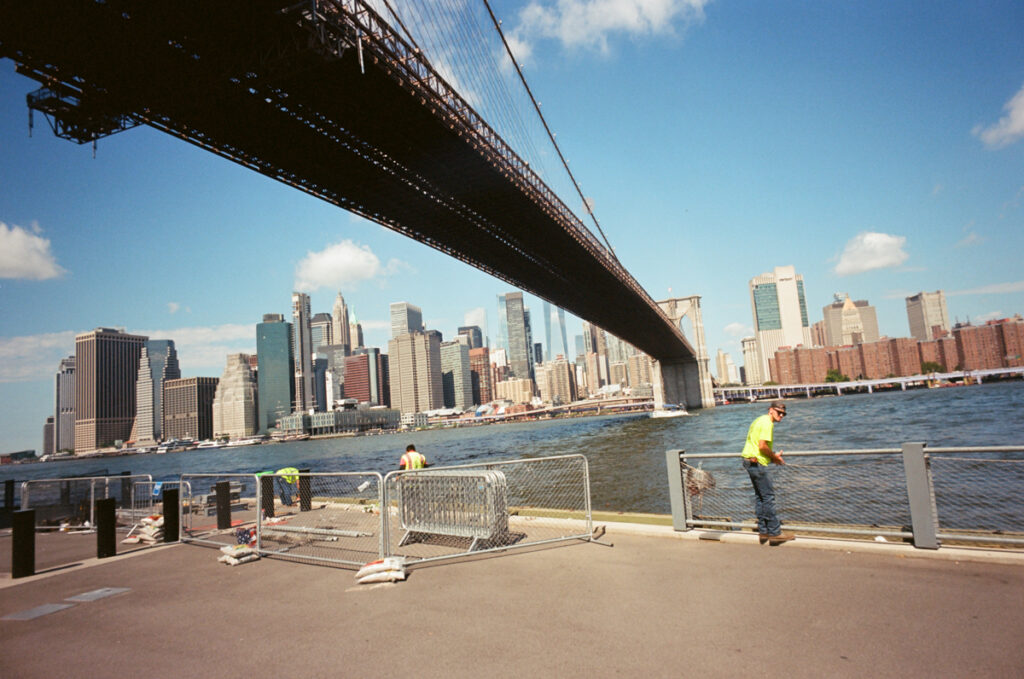
Here I would give the advantage to the 1979 Elmarit 24mm R in terms of deeper color and sharpness, noting that the slight variation in focal length might make the comparison a little imprecise.
The Elmarit R may have an even stronger advantage in terms of flare resistance compared to the 1958 Super Angulon 21mm.
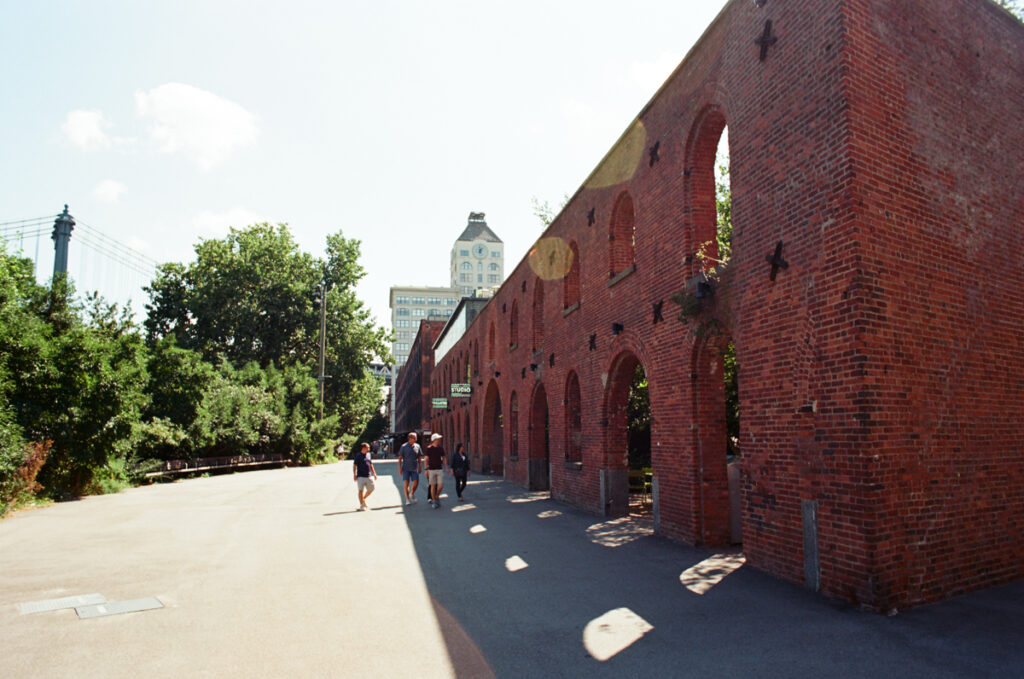
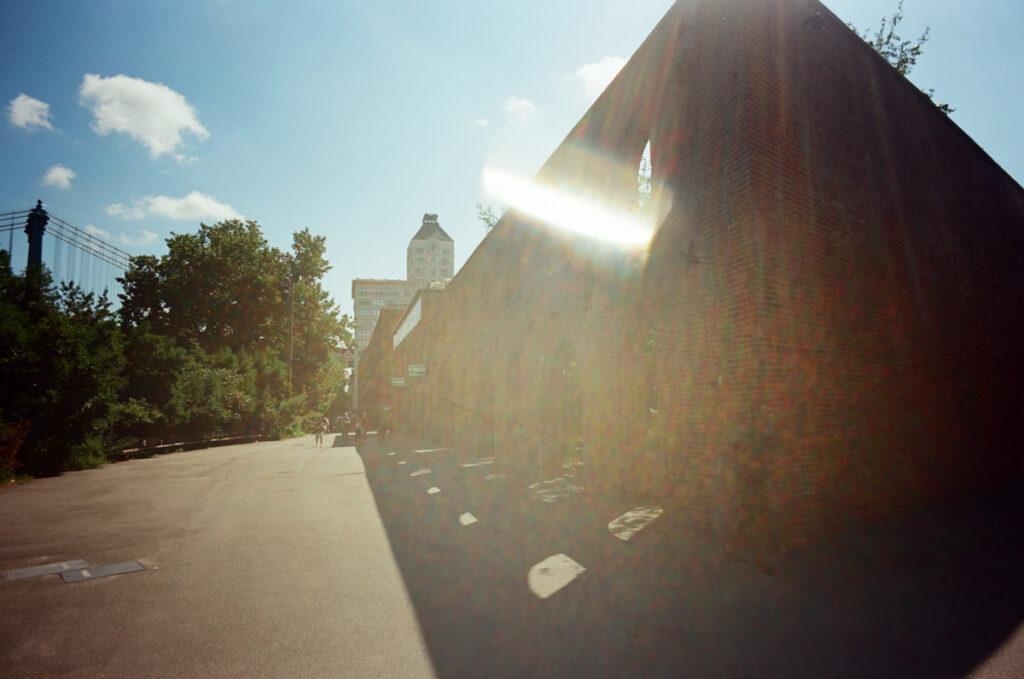
I don’t have a hood for either lens, so perhaps this is down to improved coatings available in the late 1970’s vs the late 1950’s. I’m still a fan of the Super Angulon (noting that it is branded as a Leitz, but made by Schneider.) It’s a fun little lens, but side-by-side, I’d say a solid ‘W’ for the 24mm R.
I won’t deny that part of the attraction of the Leica M3 is that it is one of the most famous cameras ever made — even if I stumbled onto it without knowing that at first. While the ‘hipster’ appeal of having an M might be considered an intangible when comparing things like the clarity, contrast, bokeh and color science of any given lens, the ongoing fame and appeal of the M system actually does have some concrete ‘real world’ benefits. Once you make the initial investment, the camera, lenses & accessories tend to either hold their value or appreciate, and parts & service are more readily available to keep everything in good nick. The cost of a CLA or a major repair on a Leica R — if you can find someone who services them — may be comparable to just going out and buying another one on eBay. (We made this painful discovery on a Leicaflex SL2 with a bad light meter that essentially ‘totaled’ an otherwise excellent camera.)
Shooting the 35mm Summicron R f2 side by side with the 35mm Summaron f2.8 continued the trend of very close results.
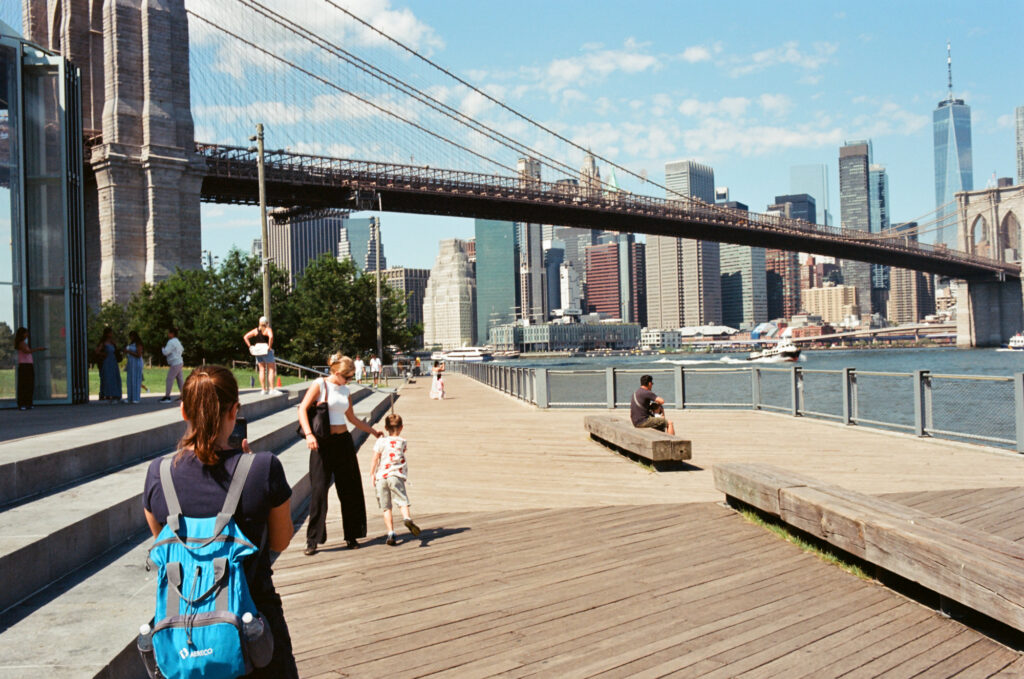
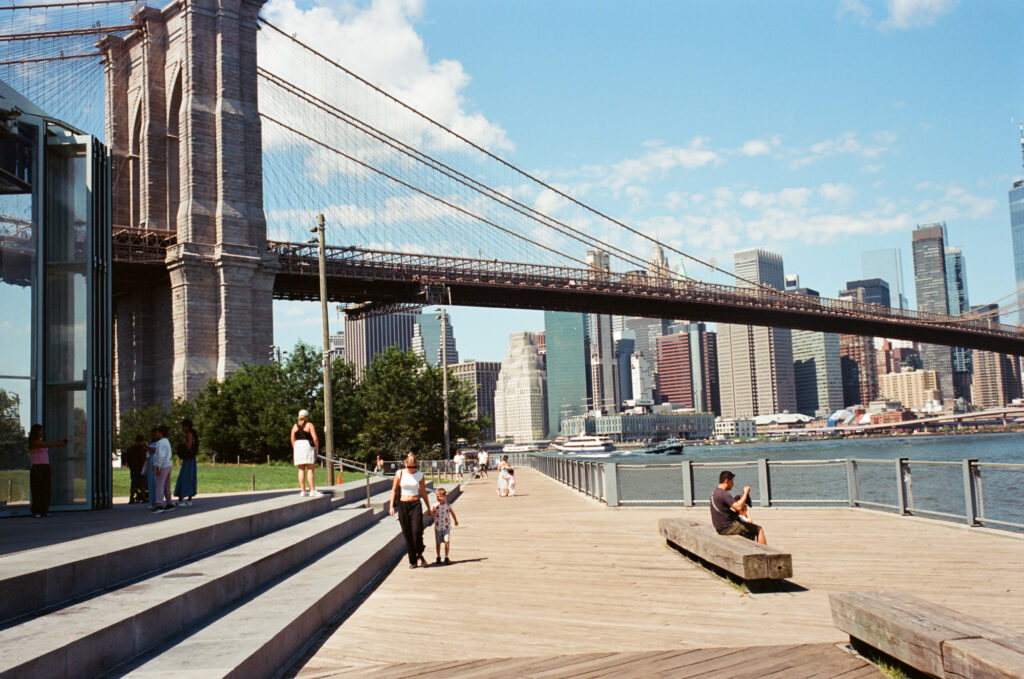
One of the least tangible, but perhaps not insignificant appeals of the M cameras is their design. To me, a Leica M is a great looking piece of industrial design, one that has held up without needing to be updated for over 70 years.
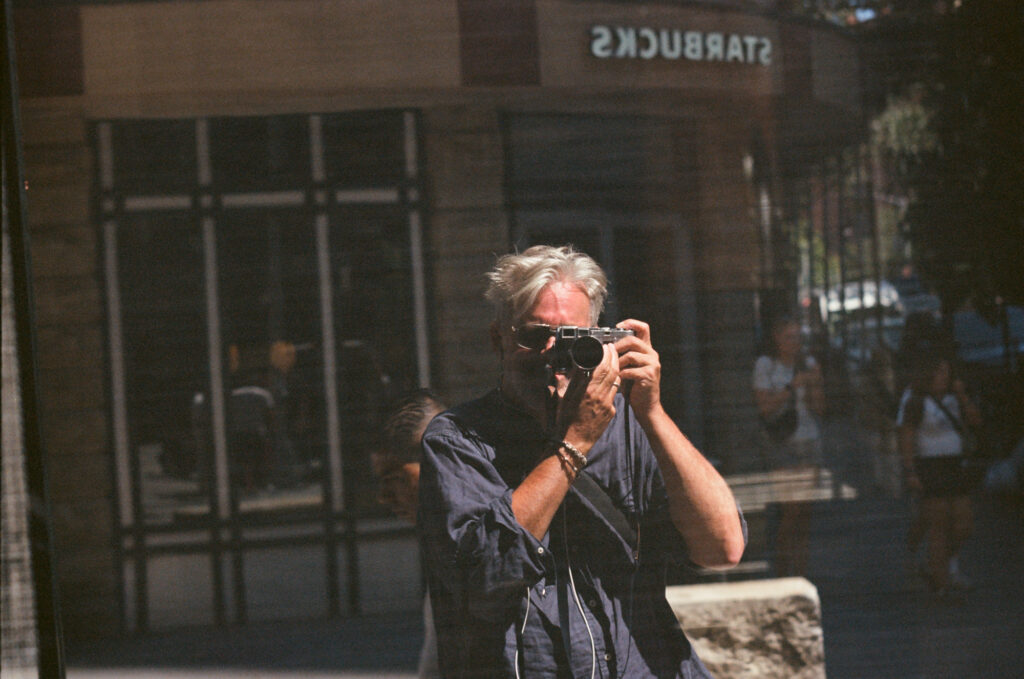
A Leica M exudes quality with its finely engineered all brass controls and the simple lines and elegant curves of the body, whereas the molded metal body, leatherette cover, and plastic controls make the Leica R6.2 feel more like a middle grade consumer camera than a top shelf option from the people who have been setting the style and quality bar since inventing the 35mm still camera around 100 years ago. In terms of styling, I have grown to prefer the discreet engraved scripted “Leica” branding on the top plate of the M3 compared to the big bold block letters and even the red dot on the R6.2. If you know, you know…
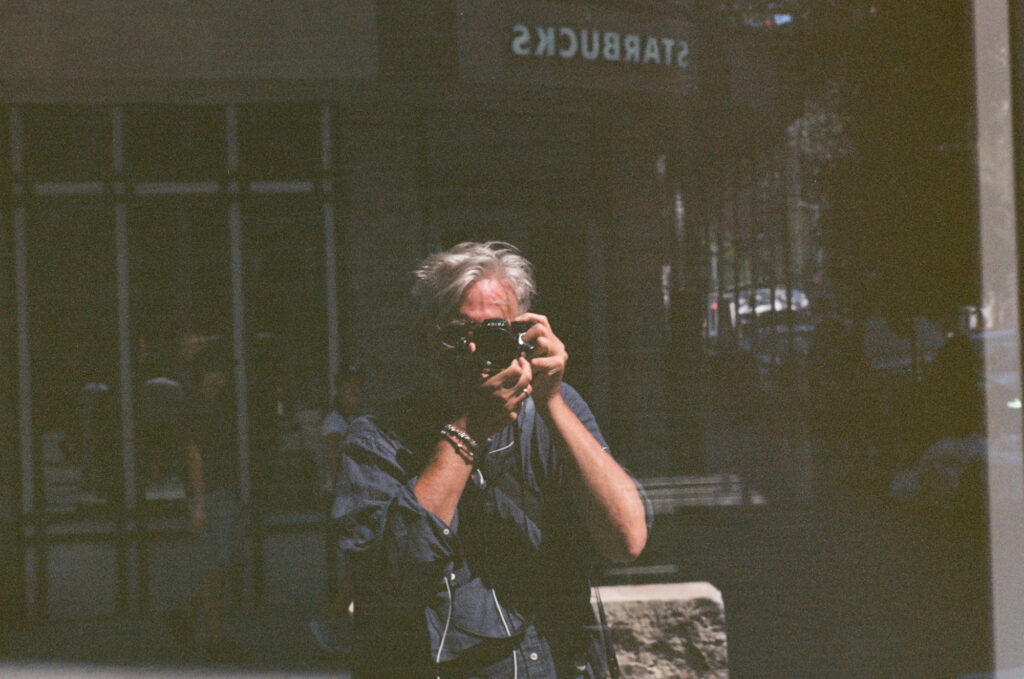
It’s an interesting question to consider how important a camera’s visual appeal as an object is to its relative popularity among photographers, but there’s no question that some of the best-loved and most collectible cameras are also brilliant pieces of design and just look cooler than their competitors made by other brands. This includes both Leica Barnack’s and M’s, the Rolleiflex TLR’s, the original Nikon F SLR, and my personal favorite ‘looker’ a chrome trimmed Hasselblad 500CM, which looks like you grabbed it from the lacquered mantelpiece of an Art Deco penthouse before jumping into a Jaguar XK convertible to meet some friends for a cruise on a Cris Craft motor yacht out to Oyster Bay.
The last lens comparison is the M Mount 90mm Elmarit f2.8 rigid vs. the R Mount Elmarit f2.8. After waxing rhapsodic about the gorgeous looks of the M, I’ll admit that a vintage Elmarit 90mm might be the exception that proves the rule.
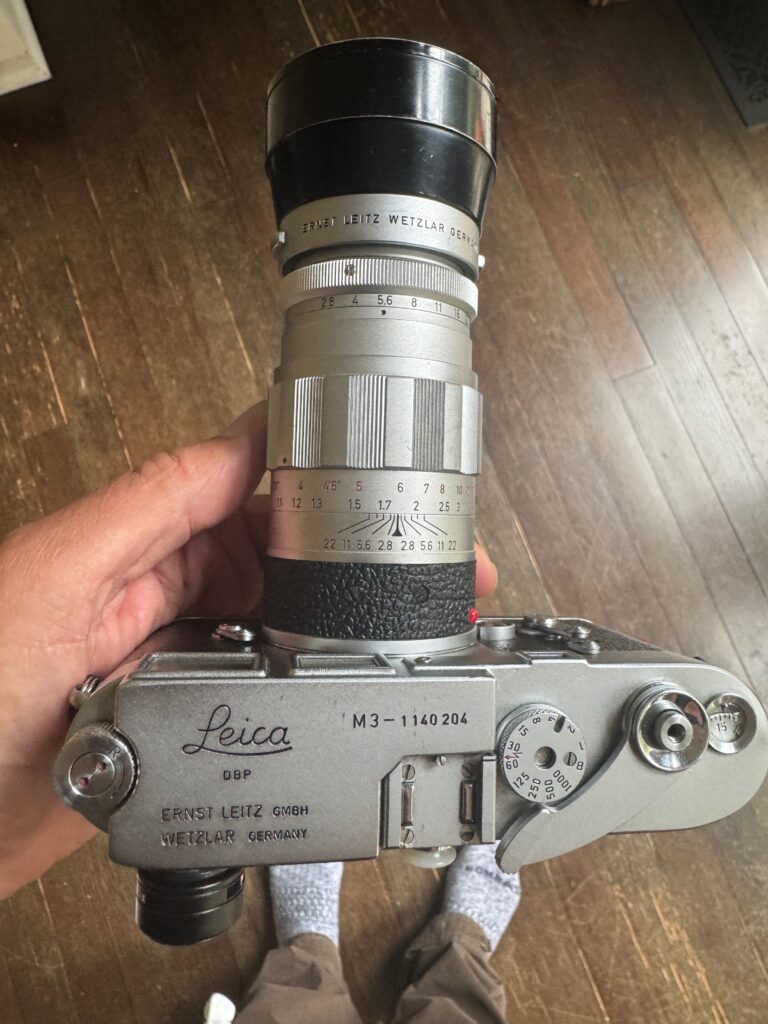
When you add in the vintage hood, the Elmarit 90mm gives the famous frame advance lever a run for the money in terms of the, um, ‘symbolic’ connotations. But let’s get back to the photos!

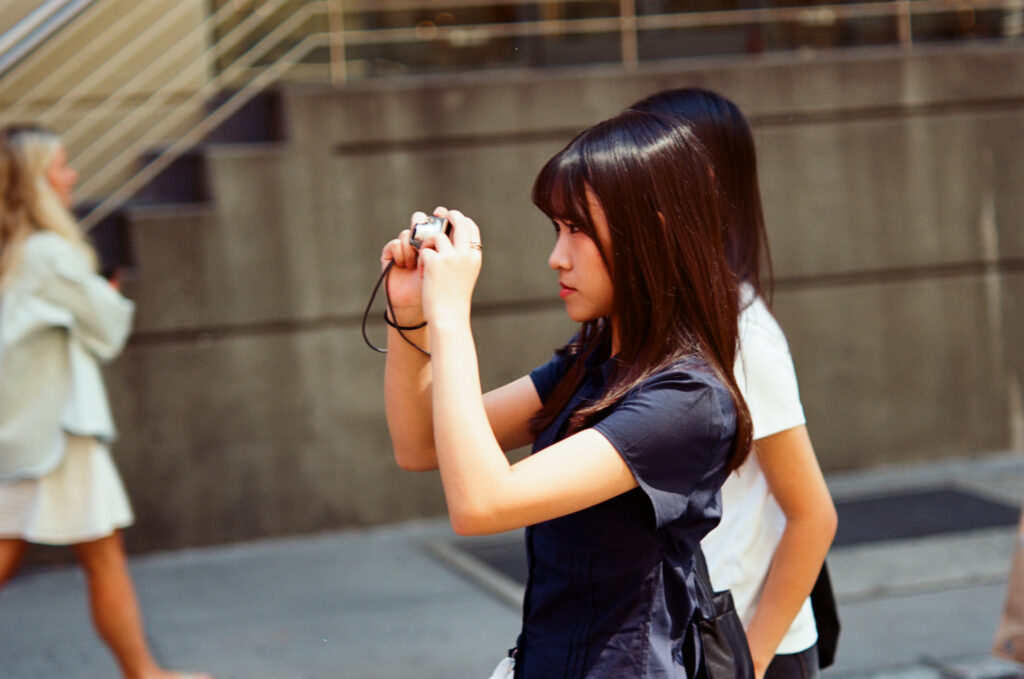
I think the colors are a little richer and deeper on the Elmarit M photo, so here I’d give the edge to a 1958 lens that came off the line before the Leica R program was even launched.
On that note, another major advantage of the M system’s ongoing popularity is the almost endless variety of lenses available, including brand new lenses coming off the assembly line in Wetzlar today, along with a huge variety of other major brands, including Voigtlander & Zeiss, as well as ’boutique’ brands like MS Optics and Omnar. You can even get some real bargains for genuine Leica glass from their vast back catalogue going back to Weimar era Germany; two of my favorite Leica lenses were under $300 — the 50mm Summitar f2 and the 90mm Elmarit f2.8. With a Leica R, you are pretty much confined to using Leica R mount lenses made between 1964-2009, which are becoming increasingly scarce due to their popularity as cinema lenses.
To finish out the side-by-side comparison, I loaded twin rolls of XP2 to see how the two systems rendered in b&w, here shooting in Kingston, NY, one of the earliest settlements in New York, founded by Pieter Stuyvesant in the early 17th Century when New York was still called New Amsterdam.
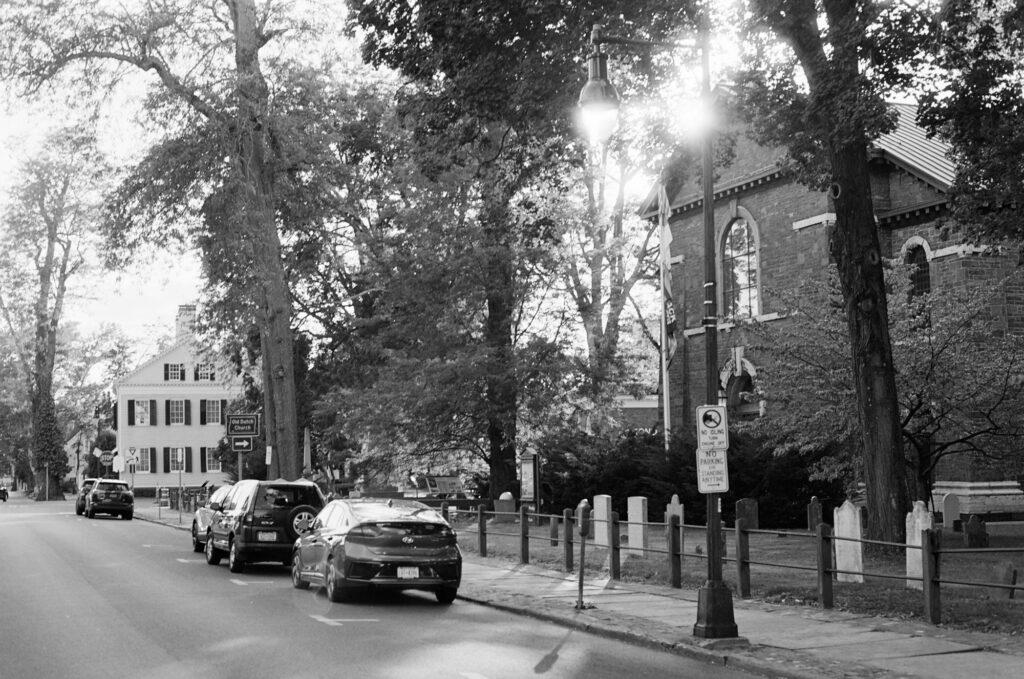
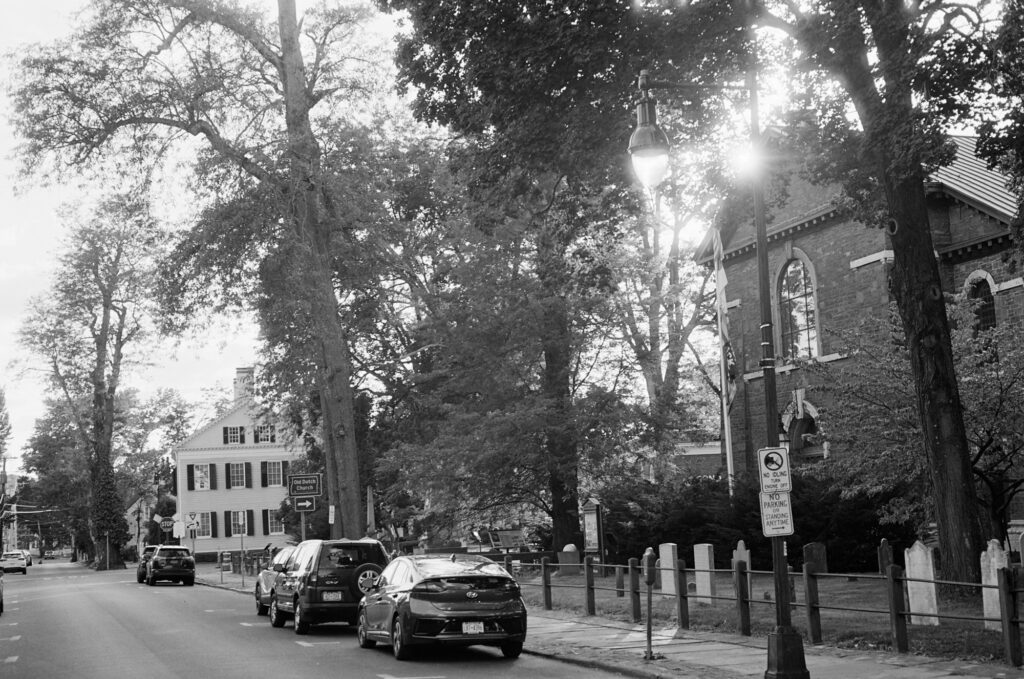
Again, not much in it.
One advantage for the Leica SLR is the ability to focus much more closely than on the rangefinder. These thistles are at the minimum focus distance on the R6.2 with the 50mm Summicron. Nice and chunky…
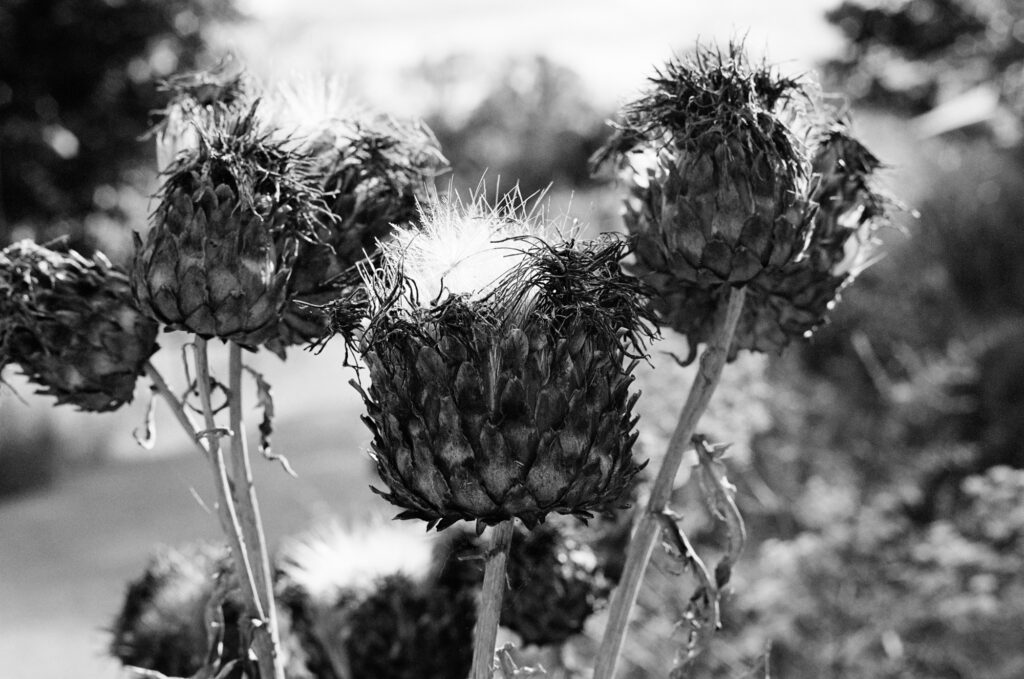
… compared to this shot on the M3 at the much more polite minimum focus distance of the 50mm Summicron.
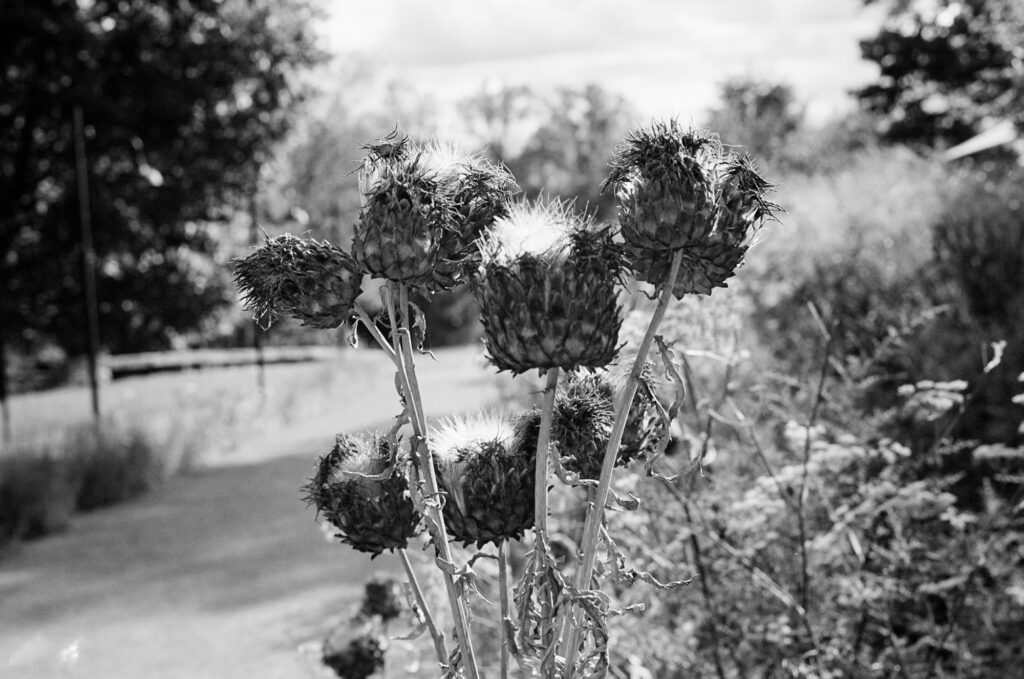
Using the 50mm Dual Range feature reduces the difference to almost imperceptible, but that option is not available on other M lenses, so if you like getting super close to your subject, the SLR has a distinct advantage.
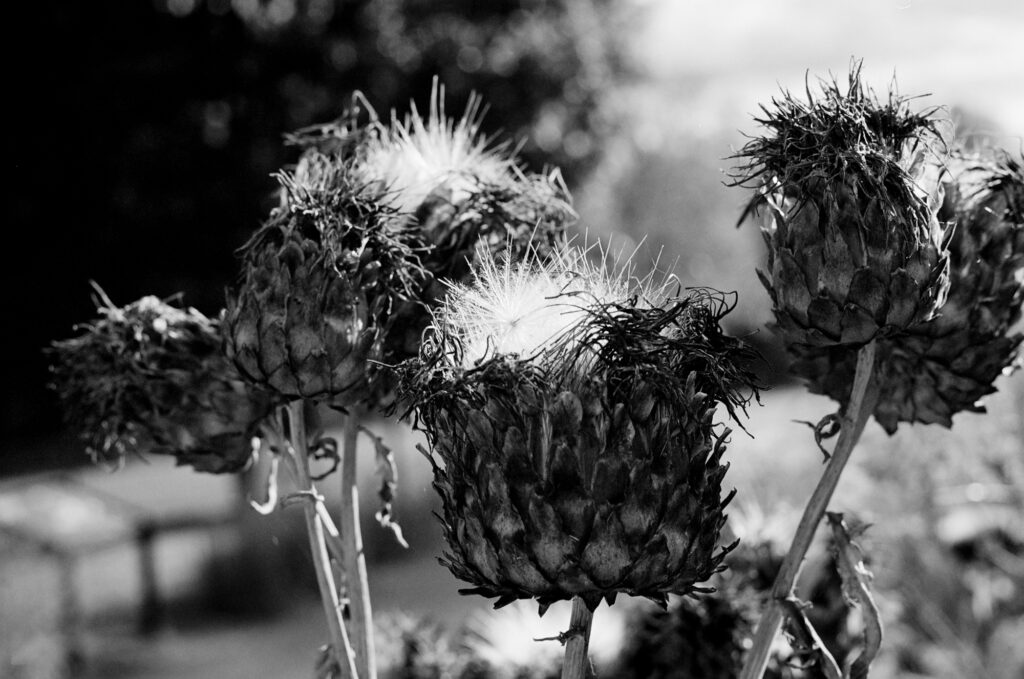
Conclusions
The takeaway is that you can’t really go too far wrong with either a Leica R or a Leica M. They are both awesome cameras capable of incredible results on film. If your budget is tight but your dream is to have a Leica, you can get set up with an R kit for a good bit less money than a comparable vintage M. I didn’t see significant performance differences between lenses that were close to each other in age and design, and even with lenses of different eras and costs, the differences were within fine margins.
This brings us to the the most interesting part of comparing the two systems: the ‘soft’ factors of the way different cameras work with a photographer’s eye, brain and hands.
I think the ergonomics of using the M are pretty hard to beat in terms of how fluid and instinctive/intuitive the shooting process becomes. But I suspect you get pretty good at any camera when you shoot it enough, so if I shot with the R 6.2 as much as I have with the M3, it would end up being just as ‘second nature.’
When it comes to the act of shooting, the two cameras feel quite different when you trigger the shutter. The nearly silent and surgically precise ‘snick’ of the Leica M shutter release is one of the most satisfying aspects of shooting with an M. It never gets old. Literally, it seems like it never gets old! The action of my M3 feels like it could have come off the store shelf yesterday… Due to the mechanics of retracting the mirror assembly, there is a slight delay when you press the shutter release on the R6.2, perhaps only a fraction of a second, but it makes the shooting experience feel a little less precise than the M.
For me, the compactness of the M body and lenses is significant, especially for street shooting. With many of the smaller M mount lenses the fully assembled ready-to-shoot camera can slide into a coat pocket — surely the world’s best pocket camera! That’s not really an option for the SLR with its much bigger lenses needed to accommodate the mirror that activates the viewfinder.
On that note, as I shoot more and more with different cameras, I’m increasingly fascinated by the underrated importance of the viewfinder in defining the experience of using a camera. Until I started shooting more avidly, I didn’t really think much about the viewfinder — it was just a little square window you aim through. But now I’m fascinated by the ways the subtle or not-so-subtle optical design differences between viewfinder systems end up shaping your experience while shooting. The finder is where the biological ‘wetware’ of the human body & brain meets the mechanics & physics of the camera’s hardware.
With a Leica M, the act of focusing with the short throw of the M lenses is very fast and straightforward — decide what to focus on, align the rangefinder patch, and you’re good. I have settled into a set up where I’ll focus with a 1.4x magnifier attached to the finder window and then frame with an external viewfinder on the cold shoe. I find I’m noticeably more accurate hitting focus with the extra magnification and I love the super bright & clear Leica external viewfinders for framing. They seem brighter than real life!
This may reflect where I am in the learning curve on a less familiar camera, but I find myself ‘fishing’ back and forth for focus more with the combo split screen/matte screen of the SLR. While any Leica camera is in pretty rarified air in terms of cost and quality, I would note that I think there are better SLR viewfinders out there, including the Nikon F. Despite those reservations, I’ll admit I find there is something kind of seductive about focusing and framing through the taking lens, which may even contribute to the extra time I spend on focusing. I feel the image taking shape in a way that I don’t when I’m looking through a rangefinder window where everything is in focus all the time from any distance. I think that subtly or no so subtly changes what I’m thinking about during the act of shooting.
With a rangefinder I tend to think about the visual look I’m going for more at the beginning of a session when I decide what film to load and/or when I select or change lenses. If I want to get a sense of the depth of field for a certain shot, I’ll have a quick look at the barrel of the lens. Once I’m in shooting position I’m trying to free my mind from thoughts about the gear and be open to ‘feeling’ the frame and the moment to shoot. With an SLR I am reminded of the optical qualities of the image every time I raise the camera to my eye. So on a conscious or unconscious level, I feel like a rangefinder tends to subtly emphasize the content and, perhaps, narrative impact of the image, while an SLR tends to emphasize the visual quality and aesthetics of the image.
It’s not that I don’t think about aesthetics when I’m using a rangefinder or narrative & timing when I shoot with an SLR, it’s a matter of the order I think about them and the fine margins of emphasis. If I want to really focus on making the best image I possibly can, I’ll reach for an SLR, but I’m lucky enough to have a Hasselblad sitting on my camera shelf. Perhaps talking about waist level finders vs. prism or rangefinders could be a topic for another post. For me shooting 35mm tends to be a little more about content/storytelling and being spontaneous and in the moment, which is best served by reaching for the M3.
There are very good reasons the Leica M has stayed popular/dominant for an astonishing 70+ year run; I can’t think of another piece of tech in my life that I’m currently using on a daily basis that is from the 20th Century, let alone from 1954. That being said, there are many many brilliant photographers who are deeply attached to their SLR’s who make wonderful photos with them, and could counter every point I’ve made above in favor of their SLR’s. Ultimately all of these ‘soft factors’ that make the M3 the most ideal 35mm camera for me are exactly that. It’s possible that you may find the soft factors line up for you in favor of an SLR. To paraphrase Sir Laurence Olivier in ‘Spartacus’, some people like oysters and some people like snails…
Neither choice is wrong or bad, it ultimately comes down to what activates your brain and creativity in the right ways.
Addendum:
While this post was waiting in the publication queue, I came across this YouTube clip with some very interesting reflections on rangefinders vs. SLR’s by the legendary Gary Winogrand from a 1977 photography master class at Rice University. Famous for his street shooting with a Leica, Winogrand makes the observation that for shorter focal lengths, e.g., 28-50mm, an SLR is more or less functionally equivalent to a rangefinder, as you end up using the split screen to focus. He would use an SLR for shooting things like sports using a 200mm, or for super close-ups, but preferred his Leica for everything else.
In one of the more interesting passages, Winogrand said he thought that the narrow depth of field in an SLR viewfinder was influencing the creative choices of the photographer, and he thought of an SLR as a tool for making “illustrations” as opposed to “photographs.”
I can’t hold a candle to Gary Winogrand as a photographer, but it feels like he might be being deliberately provocative/polemical in those statements, and favoring gear and aesthetics that align with his personal style. While I totally agree with him on the impact of the SLR viewfinder on the state of mind of a photographer while shooting, I think that shooting with a shallow depth of field is a perfectly acceptable creative strategy for some photographers/photographs and has become quite fashionable in both still and moving images in the last 50 or so years.
I’ll be very interested to hear from the community about your thoughts on rangefinders vs. SLR and which you prefer.
Youtube link below.
Share this post:
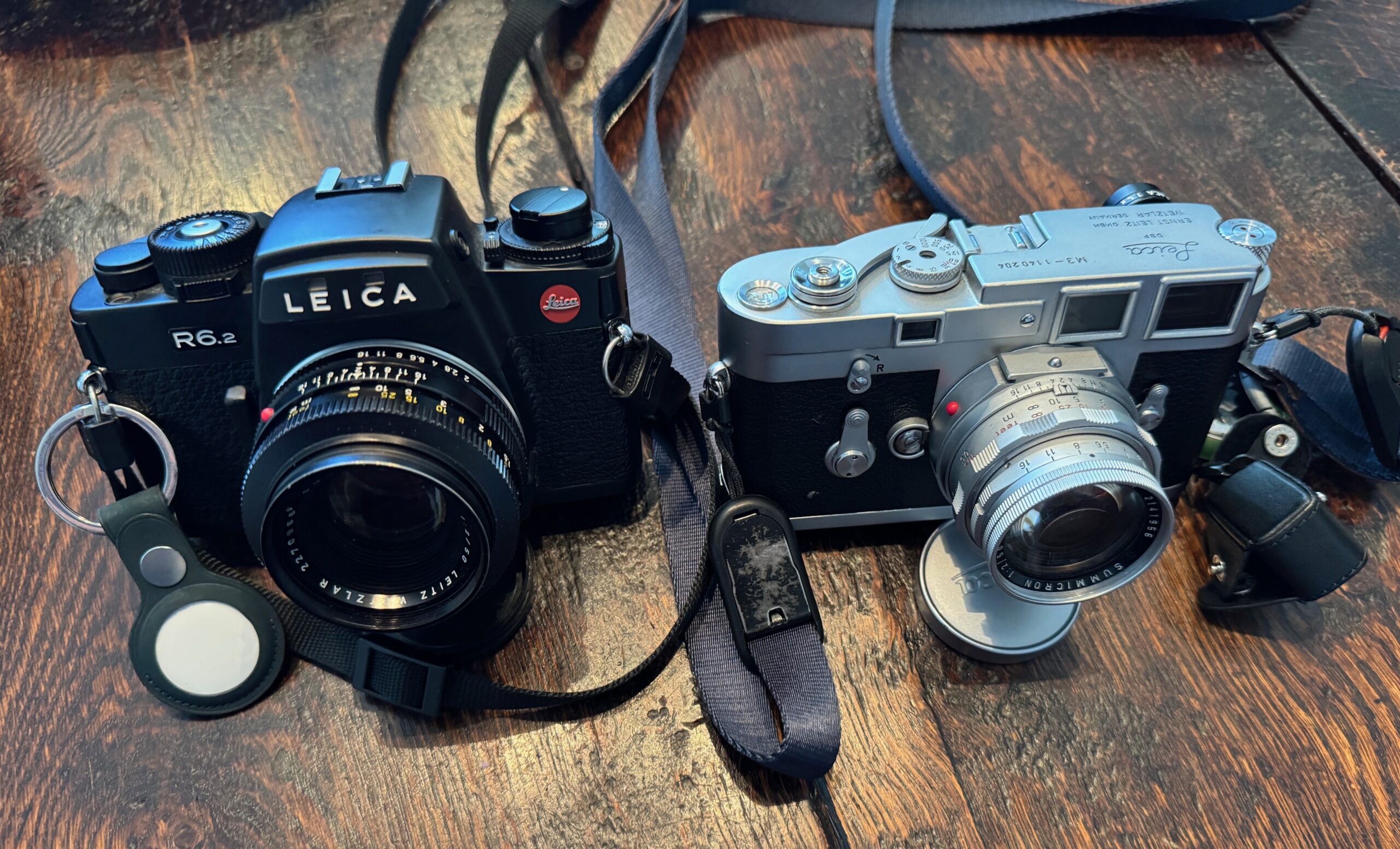
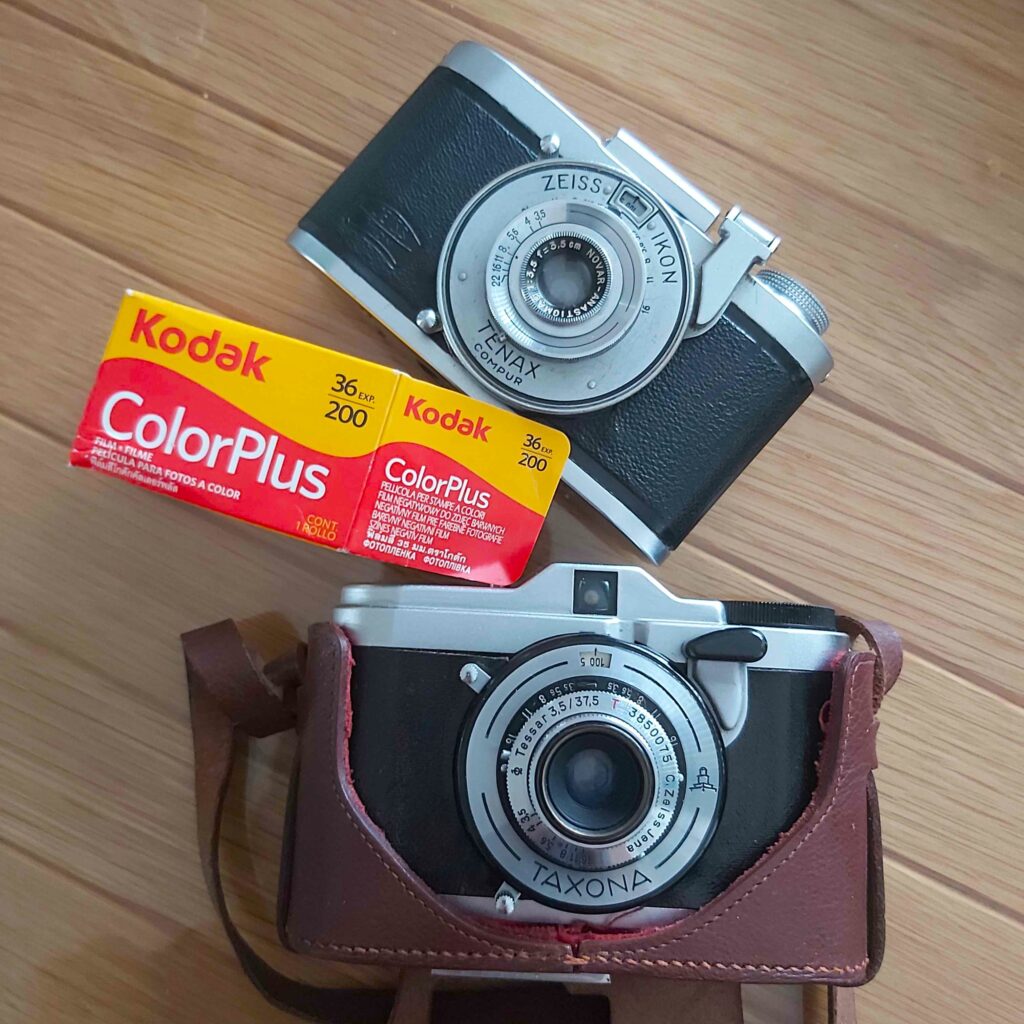
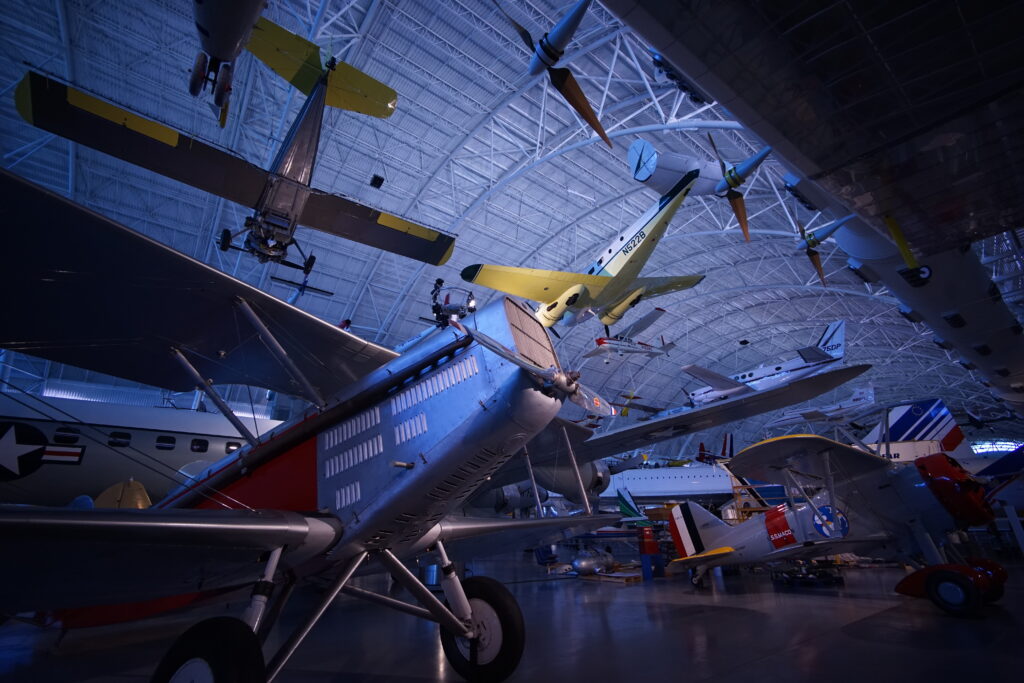
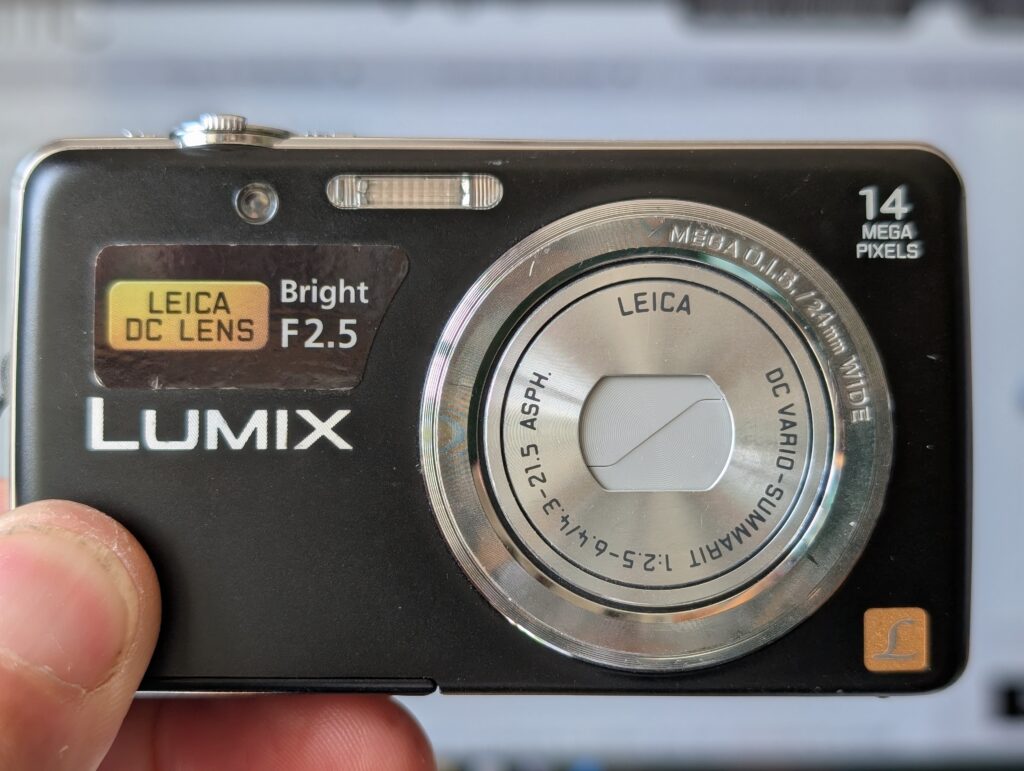
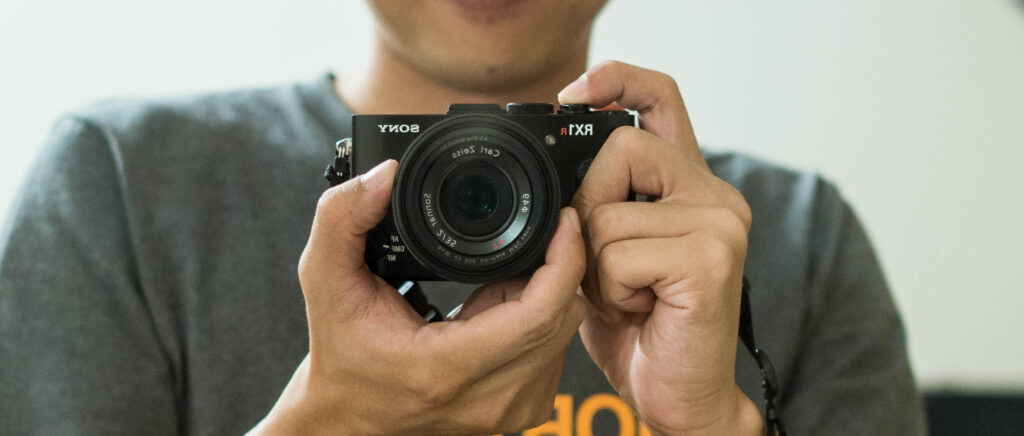
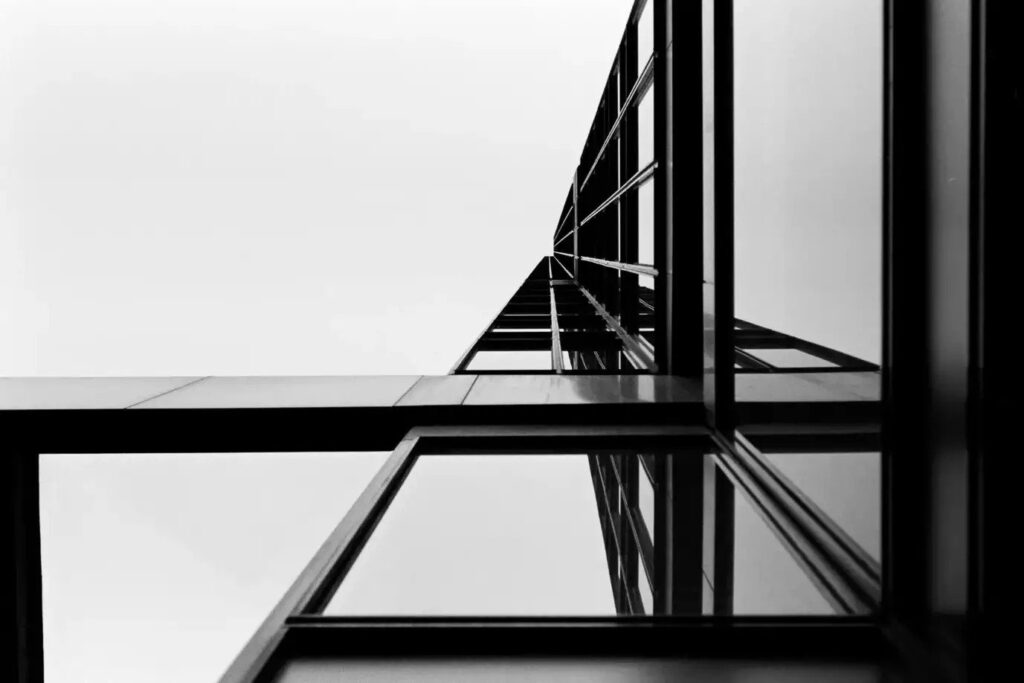
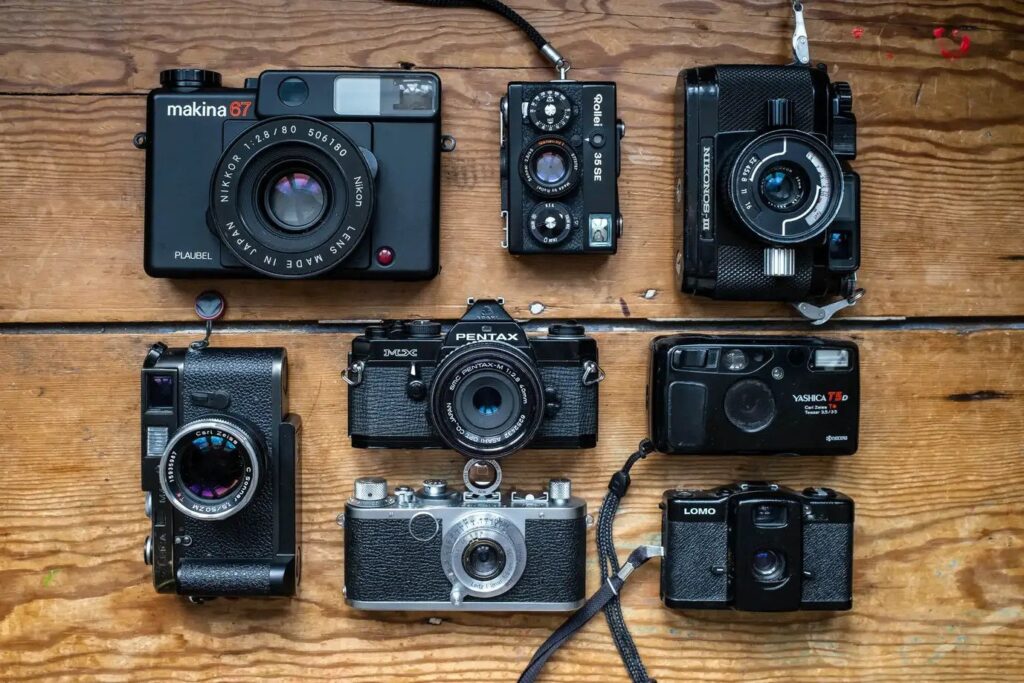
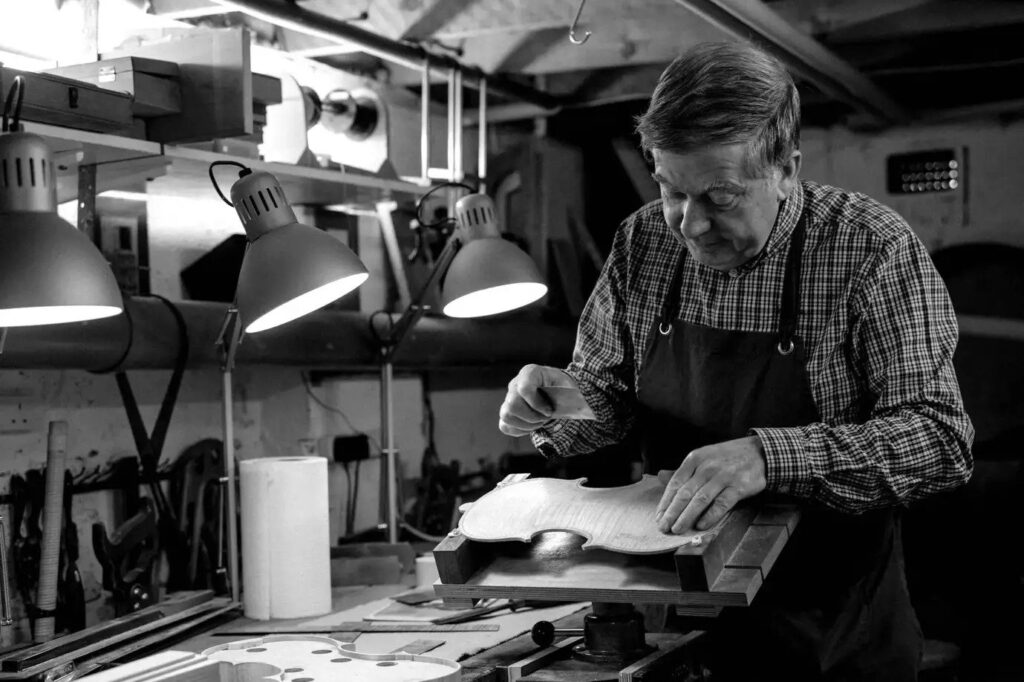
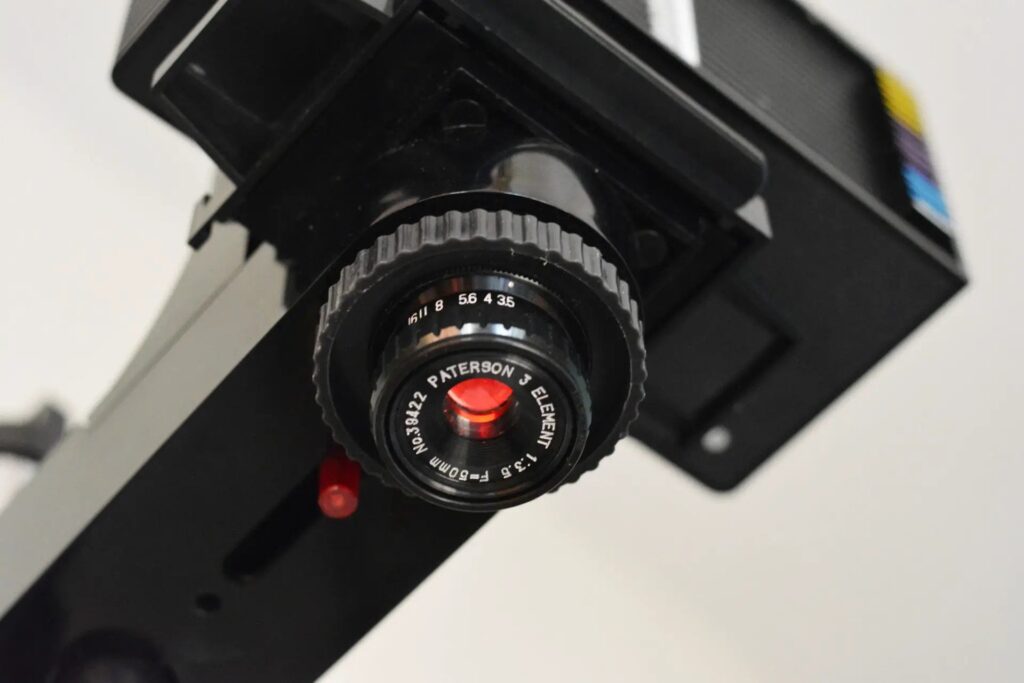
Comments
Stefan Wilde on Leica vs Leica – M vs R cameras & lenses and thoughts on Rangefinders & SLRs
Comment posted: 27/10/2025
It seems you've found your dream camera! Good on you and so glad you like it! I have an M4, M6, R6.2 and R7. While I absolutely adore the rangefinders, if I need to get it right, I reach for the... Drumroll... R7. I have shot a friend's wedding with it and it was super quick, extremely intuitive, fun to shoot and gave gorgeous results. While I love the Ms, I never found them as intuitive and simple to use as an SLR. I love them and shoot them, but I can't help but finding them a little quirky for no particular reason and focusing just that little bit more awkward and just that little bit less swift. What I love most about the Ms is there beautiful design and the fact that I can hold two extra lenses in my coat pocket, so it's a nice travel setup. I guess I'm just an SLR guy that way. And here is another confession. Most fun to shoot rangefinder I've used yet - is the Canonet 17 QL III. Coming from a German, that must be shocking! This is purely subjective, but I love it's nicer form factor and overall swiftness of operation. And when it comes to MF, my Hasselblad is mostly a shelf queen as I love my Rolleiflexes just more. And recently I've tried a Seagull 4A that came free with 4 rolls of Kodak Gold I bought second hand for 40 Euros and I'm afraid it gave my Rolleiflex T a run for its money. Back in the 35mm department, right now I 'm putting an AGFA Selectronic 3 through its paces and find it surprisingly good fun.
What I think, in the end, is that for most photographers choice of gear will be a matter of subjectivity, habits and taste. And the results depend on the quality of the light, compositional skills and mastery of your camera. Which sadly means that any qualified photographer will put me to shame using a Praktica MTL 5.
But such is life and as a little comfort, I can play with these lovely toys that I foolishly bought instead of ETFs. I just hope I don't live forever, I won't be able to afford it.
Thanks for posting!
Comment posted: 27/10/2025
Comment posted: 27/10/2025
Comment posted: 27/10/2025
Art Meripol on Leica vs Leica – M vs R cameras & lenses and thoughts on Rangefinders & SLRs
Comment posted: 27/10/2025
I was out shooting a No Kings event recently and took my M4p and I think your comment about looking more for content with the rangefinder really landed nicely.
Comment posted: 27/10/2025
Comment posted: 27/10/2025
Comment posted: 27/10/2025
Gary Smith on Leica vs Leica – M vs R cameras & lenses and thoughts on Rangefinders & SLRs
Comment posted: 27/10/2025
Comment posted: 27/10/2025
Comment posted: 27/10/2025
Comment posted: 27/10/2025
Comment posted: 27/10/2025
Comment posted: 27/10/2025
Comment posted: 27/10/2025
Charles Young on Leica vs Leica – M vs R cameras & lenses and thoughts on Rangefinders & SLRs
Comment posted: 27/10/2025
then an Argus 21 in jr high school. I took a Fed 2 to china 'cause I didn't want to risk loosing my Asahi Pentax. My present passion is informal portraits of my friends.
Comment posted: 27/10/2025
Alexandre Kreisman on Leica vs Leica – M vs R cameras & lenses and thoughts on Rangefinders & SLRs
Comment posted: 27/10/2025
What might add to your article (although you already explain some of it) :
1 The viewfinder system is not for everyone, and usually when you learn to manually focus on a Slr, it's very difficult to adapt to the rangefinder IMO.
2. Usually, R lenses are very good, usually for the "normal" focal the same as the m's, only size and sometimes rendering of a photo is the difference. (I won't talk about 30cm vs 70/90 cm minimum distance it really depends what you want to shoot) .
I happen to have an R6 that I like very much but never use as I feel the viewfinder is pure shit ( in comparison to my ms or even an F3 ). Regarding body, for me only 2 are to be bought: R6/R6.2 beecause like an m you do not need battery to run it and the r8/r9, because the viewfinder is just amazing. The rest is "Electronic" based and will fail in a near future + once you are out of battery you can only shoot 1/60 or 1/125.
Regarding lenses, i own a 50 cron, 28 cron, 60 macro elmarit. Those are good lenses especially the 50 but depending on what you want to achieve. I Also have a 100mm Makro Apo, and this one is a jewel in it's rendering. It could give you result as sharp as digital, however in the right circumstances, the rendering of the image is poetic.... just a big, fat, heavy dream :o)
Eventually, I had the chance to have a friend working in a leica store and could try some lenses, which helped me greatly narrowing down the lenses I wanted. Also, I hate shooting wide thus the choices were almost too simple ;o)
Keep writing, it's always interesting! (and get closer god******!)
in all friendliness,
Alex
Comment posted: 27/10/2025
Comment posted: 27/10/2025
Comment posted: 27/10/2025
Comment posted: 27/10/2025
Comment posted: 27/10/2025
Omar Tibi on Leica vs Leica – M vs R cameras & lenses and thoughts on Rangefinders & SLRs
Comment posted: 27/10/2025
Agreed about the M vs the R - the M is a classic design, but while I do like the look of the non-flex Rs especially the R7, it really doesn't have the same wow factor. Perhaps betraying the fact that it is a Minolta XE body with some Leitz internals. Not surprised that the R vs M mount lenses performed similarly - they should be similar after all! Of course, newer is always better. I was briefly interested in the R mount before discovering the prices. Cinematographers discovered that the R mount can be easily adapted to digital and boom went the prices. Something similar happened in the Contax world for C/Y mount lenses, but to a lesser degree, probably because it isn't as well known.
Regarding SLRs vs rangefinders - I've not used a rangefinder (not from lack of trying!) but I did start off with my Voskhod viewfinder, before jumping into the SLR world. I still carry it with me everywhere alongside a Contax, usually loaded up with B&W film. The Voskhod is a lot of fun to use but it had a bit of a learning curve, I learned how to better gauge distances and zone focus with it. Nowadays I frequently zone focus with my SLR too, unless there's a certain DOF effect I'm trying to achieve. I definitely find myself composing better with an SLR though, as it gives a closer-to-life impression of what the shot will look like, especially with stopping down the lens. With my Voskhod, there's a bit more uncertainty. Maybe it does influence the shot, but I question - does it matter?
I don't feel that Winogrand is being very profound or frankly coherent here. To me it comes off more that he prefers small discreet cameras over large ones for his style of photography, which is fair, but he's using it as a way to be elitist. I can definitely see agree that, say, my Voskhod is much better for street snapshots than my Contax 167MT, in the same way that the M would be better than the R, but I'm sure Eggleston or Adams would highly disagree.
Ultimately though - the best thing is to have both :) Cheers!
Comment posted: 27/10/2025
Comment posted: 27/10/2025
Comment posted: 27/10/2025
David Pauley on Leica vs Leica – M vs R cameras & lenses and thoughts on Rangefinders & SLRs
Comment posted: 27/10/2025
Comment posted: 27/10/2025
Ken Davis on Leica vs Leica – M vs R cameras & lenses and thoughts on Rangefinders & SLRs
Comment posted: 27/10/2025
I have run the two systems alongside each other ever since. I normally take the M's with me but the R's are in the boot of the car in case the subjects change for me.
Regarding the 'special look' of the lenses. I really noticed the difference when projecting slides or viewing them through a high quality viewer. To me there was a special quality in the shadows that I didn't see before and there was a real impact.
I'm not sure this shows on print film. I'm also not sure digital capture shows it the same but that's just my feelings. The R's got left behind but I still use mine (the viewfinder of the R9 and the SL2 are magic!). Now a Visoflex on the full frame digital M's is allowing me to use the macro and telephoto lenses from the R's so the systems have grown together for me.
Comment posted: 27/10/2025
James Evidon on Leica vs Leica – M vs R cameras & lenses and thoughts on Rangefinders & SLRs
Comment posted: 28/10/2025
R to M mount adapter to use on my M240. I was not disappointed. Inevitably I bought a very nice R7 body that had been CLA'd. I now have several R lenses, and with the right adapter, I can use them on my M5, M240, as well as my L mount CL and Panny S1-R. The R lenses may not be up to current Leica standards, but they do remain among the best of the Leica vintage lenses.
Comment posted: 28/10/2025
Comment posted: 28/10/2025
Comment posted: 28/10/2025
Geoff Chaplin on Leica vs Leica – M vs R cameras & lenses and thoughts on Rangefinders & SLRs
Comment posted: 28/10/2025
I'd second what's been said before - it's the photos that matter, The best camera is the one you have with you even if it's a smartphone. You're photos are excellent, and it's quite hard to get good parallel photos using two cameras in a dynamic environment with people milling around. As you suggested any camera you are 100% familiar with and use regularly can become transparent to you in use. Changing cameras, lenses, even films can distract you from your photographic intention leading to an inferior result. Stick to the M3 and 50 (and 90 if you must)!
Comment posted: 28/10/2025
Comment posted: 28/10/2025
Comment posted: 28/10/2025